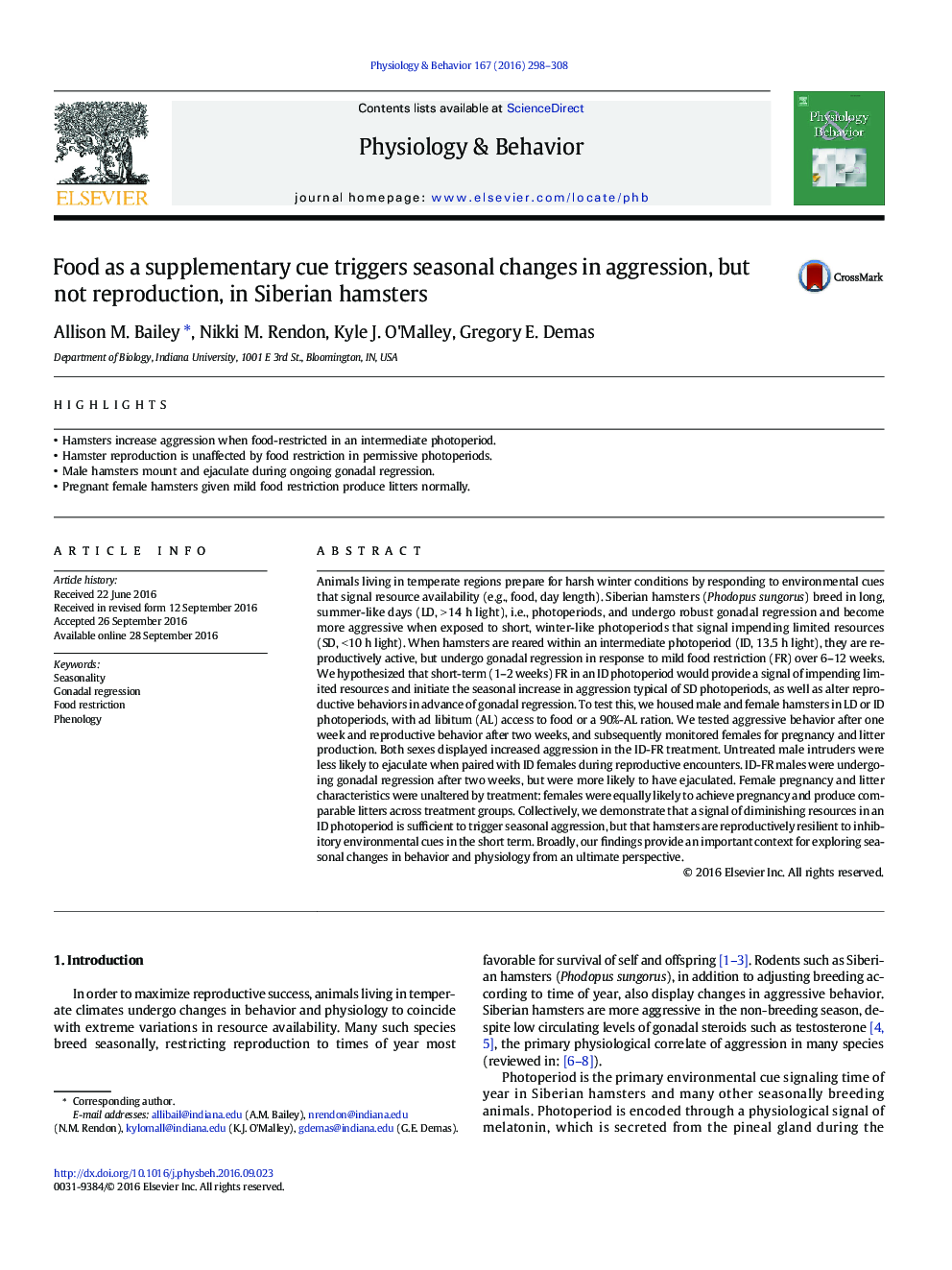| کد مقاله | کد نشریه | سال انتشار | مقاله انگلیسی | نسخه تمام متن |
|---|---|---|---|---|
| 5922529 | 1571152 | 2016 | 11 صفحه PDF | دانلود رایگان |
عنوان انگلیسی مقاله ISI
Food as a supplementary cue triggers seasonal changes in aggression, but not reproduction, in Siberian hamsters
ترجمه فارسی عنوان
غذا به عنوان یک نشانه مکمل باعث تغییرات فصلی در تجاوز، اما نه تولید مثل، در همسترهای سیبری
دانلود مقاله + سفارش ترجمه
دانلود مقاله ISI انگلیسی
رایگان برای ایرانیان
کلمات کلیدی
فصلی، رگرسیون گنادال، محدودیت غذا، فنولوژی،
موضوعات مرتبط
علوم زیستی و بیوفناوری
بیوشیمی، ژنتیک و زیست شناسی مولکولی
فیزیولوژی
چکیده انگلیسی
Animals living in temperate regions prepare for harsh winter conditions by responding to environmental cues that signal resource availability (e.g., food, day length). Siberian hamsters (Phodopus sungorus) breed in long, summer-like days (LD, >Â 14Â h light), i.e., photoperiods, and undergo robust gonadal regression and become more aggressive when exposed to short, winter-like photoperiods that signal impending limited resources (SD, <Â 10Â h light). When hamsters are reared within an intermediate photoperiod (ID, 13.5Â h light), they are reproductively active, but undergo gonadal regression in response to mild food restriction (FR) over 6-12Â weeks. We hypothesized that short-term (1-2Â weeks) FR in an ID photoperiod would provide a signal of impending limited resources and initiate the seasonal increase in aggression typical of SD photoperiods, as well as alter reproductive behaviors in advance of gonadal regression. To test this, we housed male and female hamsters in LD or ID photoperiods, with ad libitum (AL) access to food or a 90%-AL ration. We tested aggressive behavior after one week and reproductive behavior after two weeks, and subsequently monitored females for pregnancy and litter production. Both sexes displayed increased aggression in the ID-FR treatment. Untreated male intruders were less likely to ejaculate when paired with ID females during reproductive encounters. ID-FR males were undergoing gonadal regression after two weeks, but were more likely to have ejaculated. Female pregnancy and litter characteristics were unaltered by treatment: females were equally likely to achieve pregnancy and produce comparable litters across treatment groups. Collectively, we demonstrate that a signal of diminishing resources in an ID photoperiod is sufficient to trigger seasonal aggression, but that hamsters are reproductively resilient to inhibitory environmental cues in the short term. Broadly, our findings provide an important context for exploring seasonal changes in behavior and physiology from an ultimate perspective.
ناشر
Database: Elsevier - ScienceDirect (ساینس دایرکت)
Journal: Physiology & Behavior - Volume 167, 1 December 2016, Pages 298-308
Journal: Physiology & Behavior - Volume 167, 1 December 2016, Pages 298-308
نویسندگان
Allison M. Bailey, Nikki M. Rendon, Kyle J. O'Malley, Gregory E. Demas,
